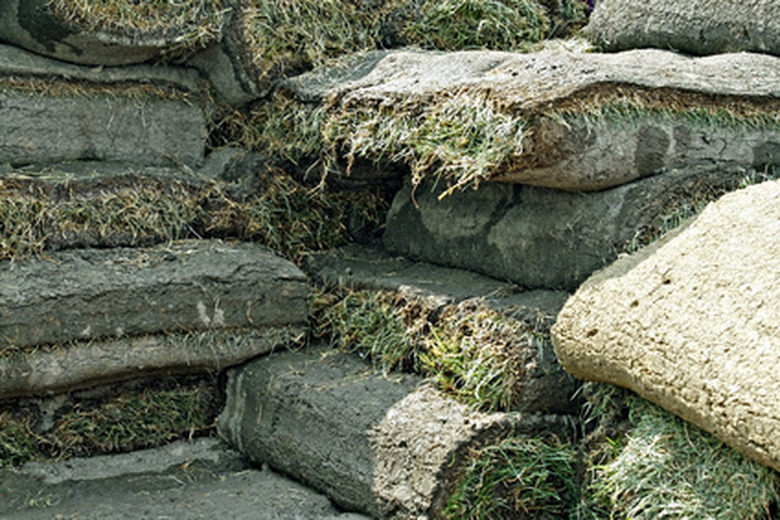How To Water New Bermuda Sod
Few things spruce up the looks of a home faster than a new sod lawn, and Bermuda sod is one of the heartier warm-weather grass varieties. Bermuda sod makes a lawn look thick, full and vibrantly alive–provided that you water it properly. The roots of a new Bermuda sod lawn need just the right amount of water to overcome the shock of being dug up and moved and to begin the growing process. Fortunately, watering a new Bermuda sod lawn is not difficult, but it does require the home gardener to frequently check the new sod's condition.
Step 1
Water the area for the new sod thoroughly 12 to 24 hours before the sod arrives, using a sprinkler. Sprinkle a minimum of one inch of water on the ground where the sod will be laid. This could take an hour or more of sprinkling.
- Few things spruce up the looks of a home faster than a new sod lawn, and Bermuda sod is one of the heartier warm-weather grass varieties.
- The roots of a new Bermuda sod lawn need just the right amount of water to overcome the shock of being dug up and moved and to begin the growing process.
Step 2
Sprinkle the new Bermuda sod immediately after it is laid in place. Sprinkle at least one inch of water on the new Bermuda for the first watering. Again, this could take an hour or more.
Step 3
Water the sod so it is damp but not soggy for 14 days, or until new growth is obvious. Water as often as necessary to maintain soil dampness. In hot or windy weather, it may be necessary to water more than once a day. Do not allow water to puddle. Water in the mornings whenever possible, before the day becomes hot.
- Sprinkle the new Bermuda sod immediately after it is laid in place.
Step 4
Cut back on watering when the new Bermuda sod has grown to four inches long. Do not allow the soil to dry completely between waterings but reduce to approximately one inch per week unless the new Bermuda sod begins showing signs of stress, such as wilting or yellowing leaves.
Tip
Once established, Bermuda is fairly drought-tolerant, but it grows best when the soil is damp but not soggy.
